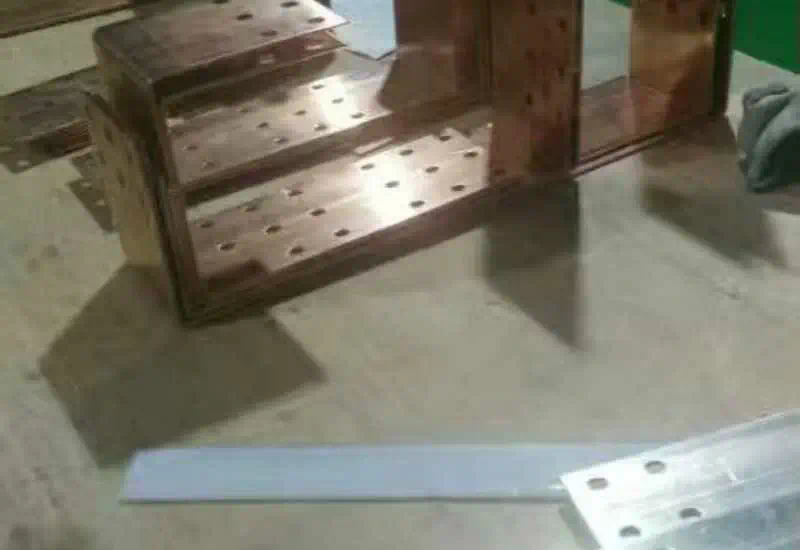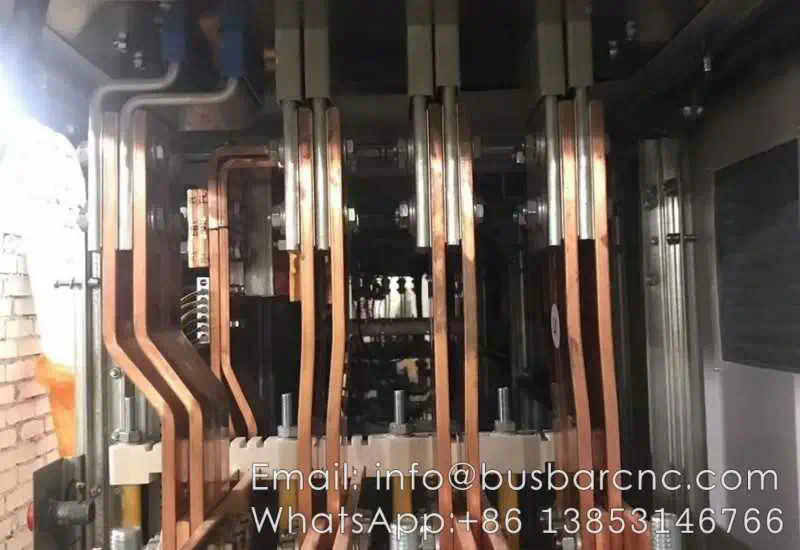Copper busbars are essential components in the electrical industry, serving as conductors for transmitting electric power within various applications. To meet the demands of the electrical industry and ensure efficient production processes, the use of copper busbar bending machines has become increasingly prevalent. These specialized machines offer precision bending capabilities, enabling manufacturers to produce accurately shaped busbars with speed and consistency.
Copper busbar bending machines are designed to handle the specific requirements of bending thick and rigid copper busbars with ease. These machines utilize advanced technologies and precise control systems to ensure that the bending process is executed with high precision and repeatability. By automating the bending process, these machines minimize human error and reduce the risk of material waste, ultimately improving the overall efficiency of busbar production.
The Advantages of Copper Busbar Bending Machines
One of the primary advantages of copper busbar bending machines is their ability to bend busbars of various sizes and shapes with great accuracy. Whether it’s a simple L-bend or a more complex U-bend, these machines can accommodate a wide range of bending requirements, providing manufacturers with the flexibility to produce customized busbars according to specific project needs.
Another key advantage of copper busbar bending machines is their speed and efficiency. These machines can complete multiple bends in quick succession, significantly reducing production time compared to manual bending methods. This increased efficiency not only allows manufacturers to meet tight production deadlines but also helps improve overall productivity and profitability.
Precision and Consistency in Busbar Bending
Precision and consistency are critical factors in busbar production, as even minor deviations in the shape or dimensions of a busbar can lead to functionality issues in electrical systems. Copper busbar bending machines excel in delivering precise and consistent bends, ensuring that each busbar meets the required specifications with minimal variation.
By incorporating advanced bending technologies such as CNC (Computer Numerical Control) systems, copper busbar bending machines can achieve unparalleled levels of precision busbar embossing machine in the bending process. These systems allow operators to program specific bending angles and dimensions, eliminating the guesswork associated with manual bending and ensuring that each busbar is bent accurately to the desired specifications.
Enhancing Safety and Ergonomics
In addition to improving efficiency and precision, copper busbar bending machines also contribute to enhanced safety and ergonomics in the workplace. Manual busbar bending can be labor-intensive and pose risks of repetitive strain injuries for operators. By automating the bending process, these machines reduce the physical strain on operators and create a safer working environment.
Furthermore, copper busbar bending machines are equipped with safety features such as emergency stop buttons, protective guards, and safety sensors to prevent accidents and ensure operator protection during operation. These safety measures not only safeguard personnel but also help maintain the integrity of the equipment and prevent damage or malfunctions that may result from improper operation.
Integration with Industry 4.0 Technologies
As the electrical industry continues to embrace digitalization and automation, copper busbar bending machines are evolving to integrate with Industry 4.0 technologies for enhanced connectivity and data-driven insights. By connecting to IoT (Internet of Things) platforms, these machines can collect real-time data on production metrics, machine performance, and maintenance requirements, enabling manufacturers to monitor and optimize their operations effectively.
The integration of Industry 4.0 technologies also enables predictive maintenance capabilities, allowing manufacturers to preemptively address potential issues before they escalate into costly downtime or equipment failures. By leveraging data analytics and machine learning algorithms, operators can identify patterns and trends in machine behavior, enabling proactive maintenance strategies and maximizing machine uptime.
Future Trends and Innovations in Busbar Bending
Looking ahead, the future of busbar bending machines is poised for further advancements and innovations to meet the evolving demands of the electrical industry. One key trend is the development of multi-function busbar bending machines that can perform not only bending but also punching, cutting, and other fabrication processes in a single integrated system.
Additionally, advancements in robotic technology are being explored to enhance the automation capabilities of busbar bending machines further. Robotic arms and grippers can be integrated into bending machines to handle material handling tasks, tool changes, and other operations, reducing the need for manual intervention and streamlining the overall production process.
Conclusion
In conclusion, copper busbar bending machines play a crucial role in meeting the demands of the electrical industry by offering precision, efficiency, and safety in the production of copper busbars. These machines enable manufacturers to produce accurately shaped busbars with speed and consistency, ultimately enhancing the quality and reliability of electrical systems. As technology continues to advance, the integration of Industry 4.0 technologies and innovative developments will further drive the evolution of busbar bending machines, ensuring that they remain at the forefront of modern manufacturing practices.
Copper busbars are essential components in the electrical industry, serving as conductors for transmitting electric power within various applications. To meet the demands of the electrical industry and ensure efficient production processes, the use of copper busbar bending machines has become increasingly prevalent. These specialized machines offer precision bending capabilities, enabling manufacturers to produce accurately shaped busbars with speed and consistency.
Copper busbar bending machines are designed to handle the specific requirements of bending thick and rigid copper busbars with ease. These machines utilize advanced technologies and precise control systems to ensure that the bending process is executed with high precision and repeatability. By automating the bending process, these machines minimize human error and reduce the risk of material waste, ultimately improving the overall efficiency of busbar production.
The Advantages of Copper Busbar Bending Machines
One of the primary advantages of copper busbar bending machines is their ability to bend busbars of various sizes and shapes with great accuracy. Whether it’s a simple L-bend or a more complex U-bend, these machines can accommodate a wide range of bending requirements, providing manufacturers with the flexibility to produce customized busbars according to specific project needs.
Another key advantage of copper busbar bending machines is their speed and efficiency. These machines can complete multiple bends in quick succession, significantly reducing production time compared to manual bending methods. This increased efficiency not only allows manufacturers to meet tight production deadlines but also helps improve overall productivity and profitability.
Precision and Consistency in Busbar Bending
Precision and consistency are critical factors in busbar production, as even minor deviations in the shape or dimensions of a busbar can lead to functionality issues in electrical systems. Copper busbar bending machines excel in delivering precise and consistent bends, ensuring that each busbar meets the required specifications with minimal variation.
By incorporating advanced bending technologies such as CNC (Computer Numerical Control) systems, copper busbar bending machines can achieve unparalleled levels of precision in the bending process. These systems allow operators to program specific bending angles and dimensions, eliminating the guesswork associated with manual bending and ensuring that each busbar is bent accurately to the desired specifications.
Enhancing Safety and Ergonomics
In addition to improving efficiency and precision, copper busbar bending machines also contribute to enhanced safety and ergonomics in the workplace. Manual busbar bending can be labor-intensive and pose risks of repetitive strain injuries for operators. By automating the bending process, these machines reduce the physical strain on operators and create a safer working environment.
Furthermore, copper busbar bending machines are equipped with safety features such as emergency stop buttons, protective guards, and safety sensors to prevent accidents and ensure operator protection during operation. These safety measures not only safeguard personnel but also help maintain the integrity of the equipment and prevent damage or malfunctions that may result from improper operation.
Integration with Industry 4.0 Technologies

As the electrical industry continues to embrace digitalization and automation, copper busbar bending machines are evolving to integrate with Industry 4.0 technologies for enhanced connectivity and data-driven insights. By connecting to IoT (Internet of Things) platforms, these machines can collect real-time data on production metrics, machine performance, and maintenance requirements, enabling manufacturers to monitor and optimize their operations effectively.
The integration of Industry 4.0 technologies also enables predictive maintenance capabilities, allowing manufacturers to preemptively address potential issues before they escalate into costly downtime or equipment failures. By leveraging data analytics and machine learning algorithms, operators can identify patterns and trends in machine behavior, enabling proactive maintenance strategies and maximizing machine uptime.
Future Trends and Innovations in Busbar Bending
Looking ahead, the future of busbar bending machines is poised for further advancements and innovations to meet the evolving demands of the electrical industry. One key trend is the development of multi-function busbar bending machines that can perform not only bending but also punching, cutting, and other fabrication processes in a single integrated system.
Additionally, advancements in robotic technology are being explored to enhance the automation capabilities of busbar bending machines further. Robotic arms and grippers can be integrated into bending machines to handle material handling tasks, tool changes, and other operations, reducing the need for manual intervention and streamlining the overall production process.
Conclusion

In conclusion, copper busbar bending machines play a crucial role in meeting the demands of the electrical industry by offering precision, efficiency, and safety in the production of copper busbars. These machines enable manufacturers to produce accurately shaped busbars with speed and consistency, ultimately enhancing the quality and reliability of electrical systems. As technology continues to advance, the integration of Industry 4.0 technologies and innovative developments will further drive the evolution of busbar bending machines, ensuring that they remain at the forefront of modern manufacturing practices.
